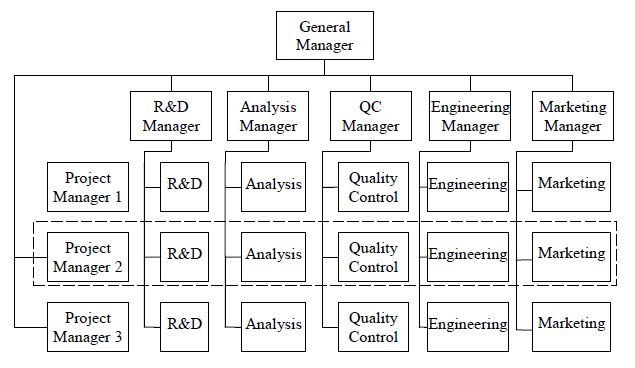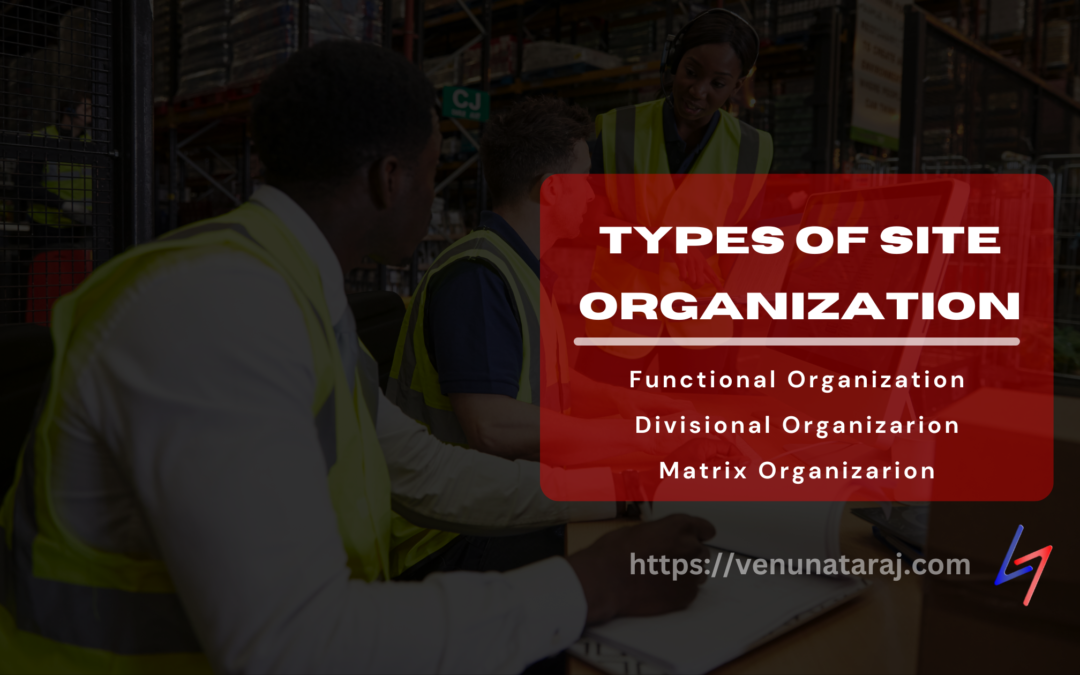3 types of Site Organization in Construction Projects
Table of Contents
Introduction to Site Organization in Construction Projects
Site organization plays a crucial role in the successful execution of construction projects. It involves structuring the project team, defining roles and responsibilities, and establishing communication channels to ensure efficient project delivery. Different types of site organization, such as functional, divisional, and matrix structures, offer various advantages and challenges for project management professionals. Understanding these organizational models is essential for effectively managing resources, coordinating activities, and achieving project objectives.
Types of Site Organization
The three most commonly known Site Organization structures are: Functional Organization, Divisional Organization and Matrix Organization. Now, let us take a look at each of these.
Functional Organization
Definition:
Functional organization is a hierarchical structure where employees are grouped by specialized functions or departments, such as engineering, procurement, and construction.

Characteristics:
- Clear Hierarchy: Functional organizations have a clear chain of command, with distinct levels of management overseeing different departments.
- Specialized Expertise: Each department focuses on a specific aspect of the project, allowing for specialized skills and knowledge.
- Efficiency: Specialization enables departments to operate efficiently in their respective domains, contributing to overall project success.
Advantages:
- Division of Labor: Functional organization promotes a clear division of labor, with each department handling specific tasks.
- Specialization: Employees develop expertise in their respective fields, leading to higher productivity and quality of work.
- Career Growth: Functional organizations offer opportunities for career advancement within specialized areas, encouraging employee development.
Disadvantages:
- Communication Barriers: Silos may form between departments, hindering communication and collaboration.
- Limited Flexibility: Functional organizations may struggle to adapt to changes in project requirements or market conditions.
- Coordination Challenges: Coordinating activities across departments can be challenging, leading to delays or inefficiencies.
Divisional Organization

Definition:
Divisional organization groups employees based on products, projects, or geographic locations, allowing for greater autonomy and flexibility within each division.
Characteristics:
- Autonomous Units: Each division operates as a self-contained entity with its own resources and management structure.
- Adaptability: Divisional organizations can adapt quickly to changes in market conditions or project requirements, thanks to their decentralized structure.
- Focused Management: Divisional managers have greater autonomy and decision-making authority, allowing for focused management attention on specific product lines or projects.
Advantages:
- Flexibility: Divisional organizations can respond quickly to market demands or changes in project scope, thanks to their decentralized structure.
- Innovation: Divisions have the freedom to innovate and experiment, fostering creativity and entrepreneurship.
- Focused Attention: Divisional managers can devote their attention to specific product lines or projects, leading to improved performance and outcomes.
Disadvantages:
- Duplication of Resources: Divisions may duplicate resources or functions, leading to inefficiencies or redundancies.
- Coordination Challenges: Maintaining consistency and coordination across different divisions can be challenging, especially in large organizations.
- Limited Central Control: Divisional organizations may lack centralized control, making it difficult to enforce standardized processes or policies.
Matrix Organization

Definition:
Matrix organization combines aspects of both functional and divisional structures, allowing employees to report to both functional managers and project managers.
Characteristics:
- Dual Reporting Relationships: Employees report to both functional managers (e.g., engineering, procurement) and project managers, balancing functional expertise with project-specific needs.
- Flexibility: Matrix structures offer flexibility in resource allocation, allowing organizations to deploy resources based on project priorities.
- Enhanced Communication: Matrix organizations promote communication and collaboration between functional departments and project teams, leading to better coordination and integration.
Advantages:
- Resource Flexibility: Matrix organizations can allocate resources dynamically, responding to changing project needs or priorities.
- Collaboration: Matrix structures foster collaboration and teamwork across functional departments and project teams, leading to synergistic outcomes.
- Adaptability: Matrix organizations are well-suited for dynamic environments or projects with complex requirements, thanks to their flexible structure.
Disadvantages:
- Role Confusion: Employees may experience role confusion or conflicting priorities due to dual reporting relationships, leading to tension or inefficiencies.
- Complexity: Managing a matrix organization requires strong communication and conflict resolution skills, as well as robust project management processes.
- Power Struggles: Matrix structures can lead to power struggles between functional managers and project managers, especially if roles and responsibilities are not clearly defined.
Conclusion
In conclusion, effective site organization is essential for the successful execution of construction projects. Understanding the different types of site organization, including functional, divisional, and matrix structures, allows project managers to choose the most suitable approach for their projects. Each organizational model offers unique advantages and challenges, influencing project management practices and team dynamics. By carefully considering the project requirements and organizational context, project managers can optimize resource allocation, enhance communication, and drive project success.
Further Reads:
For article on Warehouse and Store Management: Warehouse Management and Store Management in Construction

